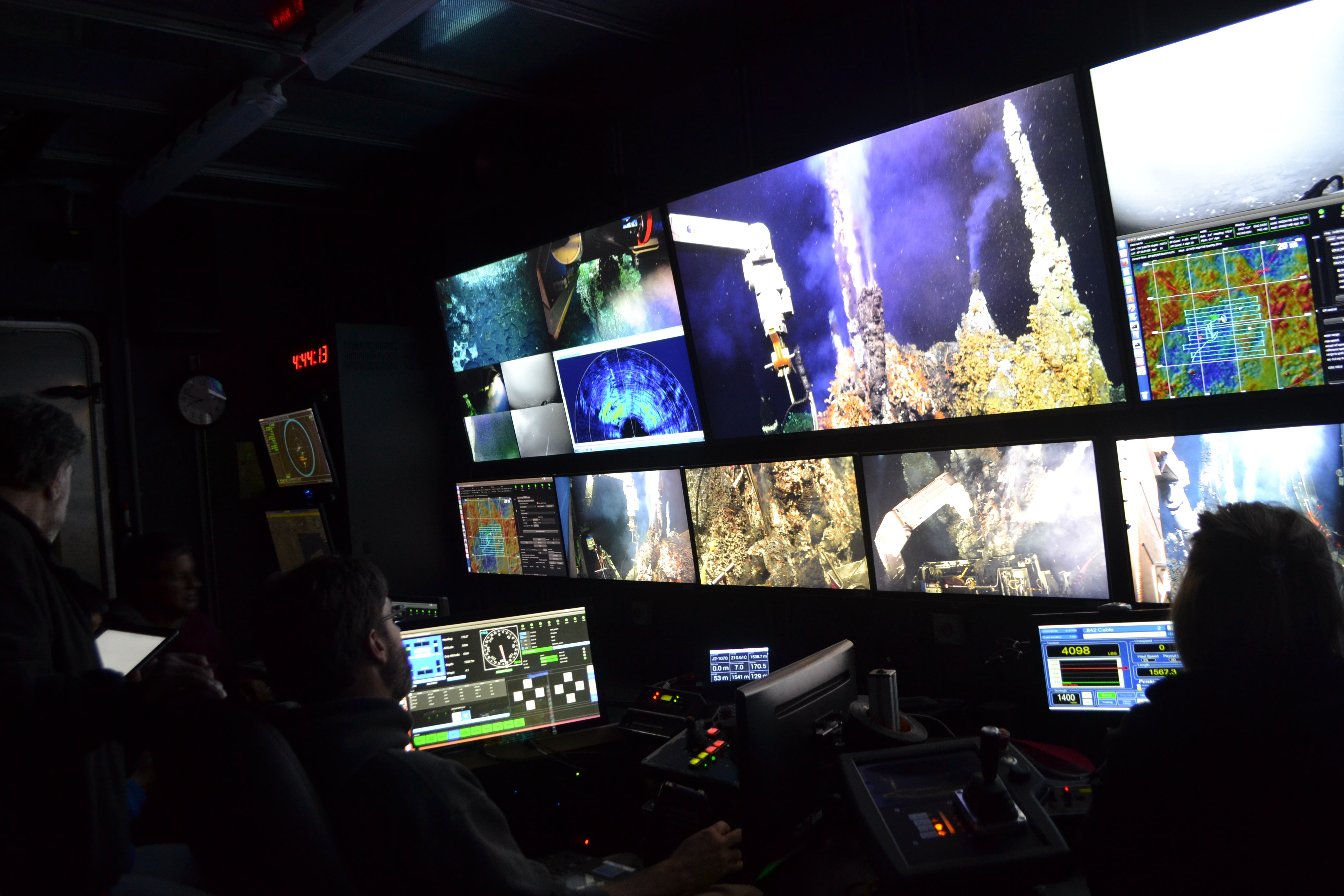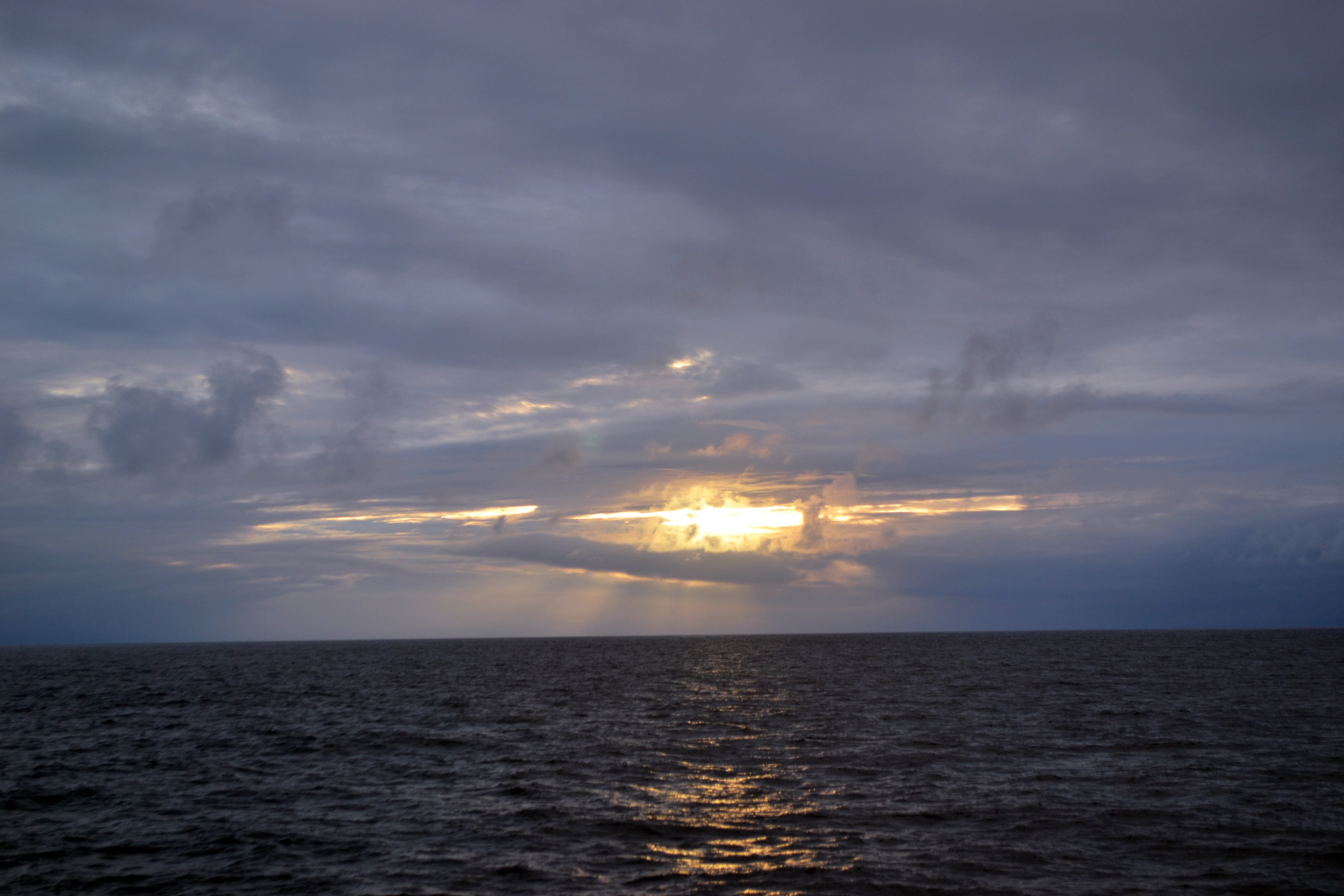Image Archive





























Vellela Vellela, Photo by Jasmine Durant, University of Washington, VISIONS18

California State University undergraduate Evan Davis sits his shift as a logger in the Jason van. Credit: E. Hudson, University of Washington, V18.

California State University undergraduate Evan Davis shows off the mud he cleaned off the top of the Slope Base deep profiler. Credit: K. Bigham, University of Washington, V18.

Forslund Crane

APL post-doc Wu-Jung Lee and Res Tech Josh Manager send the Tucker Trawl net over the side. Credit: E. Hudson, Univeristy of Washington, V18.

APL post-doc Wu-Jung Lee and Cable Array team member Katie Bigham prep a Tucker trawl net with help from SIO Res Tech Josh Manager. The net was used to collect plankton samples at the Oregon Offshore site. Credit: J. Durant, University of Washington, V18.

Recent University of Washington graduate Yash Meghare inspects the animals that had made the recovered top float of the Oregon Offshore Deep Profiler Mooring their home. Credit: K. Gonzalez, University of Washington, V18.

APL Engineers Mike Kenny, Chris Siani, and Chris Harding keep tension on the Deep Profiler cable at the Oregon Offshore site while it is wound on the winch during recovery. Credit: Y. Meghare, University of Washington, V18.

JASON prepares to attach a recovery line to the top float on the Deep Profiler Mooring at the Oregon Offshore site during dive J2-1084. Credit: UW/NSF-OOI/WHOI, V18.

Romina Logging a Jason Dive

During Leg 3 of VISIONS18 there were eight student participants. Front, left to right: Julie Nelson (Grays Harbor College, professor), Eve Hudson (University of Washington, undergraduate), Ashley Lobao (University of Washington, undergraduate), Elizabeth Pesar (Queens College CUNY, undergraduate), Katie Gonzalez (University of Washington, undergraduate), Spencer Nelson (University of Washington Bothell, undergraduate). Back, left to right: Mathew Munson (University of Washington Bothell, undergraduate), Leland Wood (University of Washington, undergraduate), Emilio Tensin (Queens College CUNY, undergraduate), Katie Bigham (Cabled Array, team member). Credit: M. Elend, University of Washington, V18.

The first look at the Shallow Profiler Mooring after a succesful deployment at Oregon Offshore. Credit: UW/NSF-OOI/WHOI, V18.

University of Washington undergradautes Ashley Lobao (left), Leland Wood (right), and Queens College undergraduate Emilio Tensin (middle) prep football floats to be deployed on the Shallow Profiler Mooring legs at Oregon Offshore. Credit: S. Nelson, University of Washington, V18.

University of Washington undergraduate Ashley Lobao runs the A-Frame on the Roger Revelle while APL engineer Dana Manalang supervises. In the background is the 200 m platform before being deployed at the Oregon Offshore Site. Credit: Spencer Nelson, University of Washington, V18.

Spencer Nelson secures hosing to the EOM cage on deck. Credit: University of Washington, V18.

APL engineer Trina Litchendorf secures a float during the deployment of the Shallow Profiler Mooring at the Oregon Offshore site. Credit: University of Washington, V18.

Roger Revelle photo by Elizabeth Pesar

Queens College undergrad Emilio Tesin helps APL Engineer Mark Harding move the EOM cage during prep in Newport. Image Credit: Mitch Elend, University of Washington, V18.

Julie Nelson, a professor at Grays Harbor College, and member of the UW Cabled Array team, shows UW Oceanography undergraduate student Amy Larsen how to process deep ocean water collected with the CTD. Credit: M. Elend, University of Washington, V18.

Undergraduate Katie Gonzalez helps the ship crew scrub the flying bridge. Credit: E. Hudson, University of Washington, V18

A beautiful sunrise at Slope Base during the Cable Array 2018 cruise. Credit: A. Larsen, University of Washington, V18.

UW undergraduate student A. Larsen, caps a container of deep ocean water that will be measured onshore for its dissolved inorganic carbon concentration. Credit: M. Elend, University of Washington, V18.

UW undergraduates Katie Gonzalez, Bing Yu Lee, and Eve Hudson fill cylinders on the RAS-PPS to prepare it for transport. Credit: M. Elend, University of Washington, V18

UW Oceanographer Mitch Elend (L) and Co-Chief Scientist Orest Kawka remove samples of hot spring fluids collected 2017-2018 in the remote acces fluid sampler that was capturing fluids from the Tiny Towers diffuse flow site in the International District Hydrothermal Field at the summit of Axial Seamount. Credit: K. Gonzalez, University of Washington, V18.

Inside the Jason control van onboard the R/V Revelle, scientists and UW undergraduate students watch as the vehicle prepares to measure the jets of superheated water issuing from the hot spring chimney 'Inferno' (>290°C) nearly one mile beneath the oceans' surface at the summit of Axial Seamount. Credit: M. Elend, University of Washington, V18.

APL engineer James Tilley handles a line to latch a thermistor array under Jason to measure ocean temperatures ~ 1 mile beneath the oceans' surface. Josh Manger, lead Marine Tech onboard the R/V Revelle, directs operations. Credit: M. Elend, University of Washington, V18.

Josh Manger, lead of the marine support group onboard the R/V Revelle, oversees launching of a winched shallow profiler assembly to be installed on a UW-NSF-OOI Cabled Array Shallow Profiler Mooring. Credit. M. Elend, University of Washington, V18.

The sun sets on the waters above Axial Seamount during the last night of operations at this site. Credit: M. Elend, University of Washington, V18.
- Anemone
- Animal
- Arthropod
- ASHES
- Axial
- Axial Base
- Axial Biology
- Axial Caldera
- Bacteria
- Basalt Lava
- BEP
- Biofouling
- biolgoy
- Biology
- Camds
- Camera
- Camhd
- Central Caldera
- Ciliates
- Cnidaria
- Coastal Biology
- Crab
- Deep Profiler Mooring
- Dive Highlights
- Eastern Caldera
- Echinoderms
- Endurance Array
- Engineering Team
- ENLIGHTEN 10
- Exploratorium
- Fish
- Geology
- HD Camera
- HPIES
- Hydrate Ridge
- Hydrates
- Hydrophone
- Hydrothermal Vents
- Illustration
- Inshore 80 Meters
- Instrument
- International District
- J-BOX
- Jason
- Jellyfish
- Junction Box
- K12
- Lava
- Mollusk
- Moorings
- Nodes
- Nudibranch
- Octopus
- OOI
- Oregon Offshore
- Oregon Offshore 600 m
- Oregon Shelf
- Oregon Slope Base
- People
- PN1B
- PN1D
- Polychaetes
- PPSDN
- Primary Node
- RASFL
- ROCLS
- ROPOS
- ROPOS Dives
- ROV Team
- RV Revelle
- RV Sikuliaq
- RV Thompson
- Salp
- Sample
- SC13
- Science Team
- Sea Cucumber
- Sea Star
- Sea Urchin
- Seafloor
- Seismometer
- Sensors
- Shallow Profiler Mooring
- Shark
- Shipboard
- Shore Station
- Slope Base
- Smoker
- Soft Coral
- Southern Hydrate Ridge
- Sponge
- Squid
- Students
- Students & Guest Participants
- Tmpsf
- Tubeworms
- VISIONS 11 Leg 1
- VISIONS 11 Leg 2
- VISIONS 11 Viewers
- VISIONS 13
- VISIONS 14
- VISIONS 15
- VISIONS 16
- VISIONS 17
- VISIONS 18
- VISIONS 20
- VISIONS 22
- VISIONS 23
- Visualization
